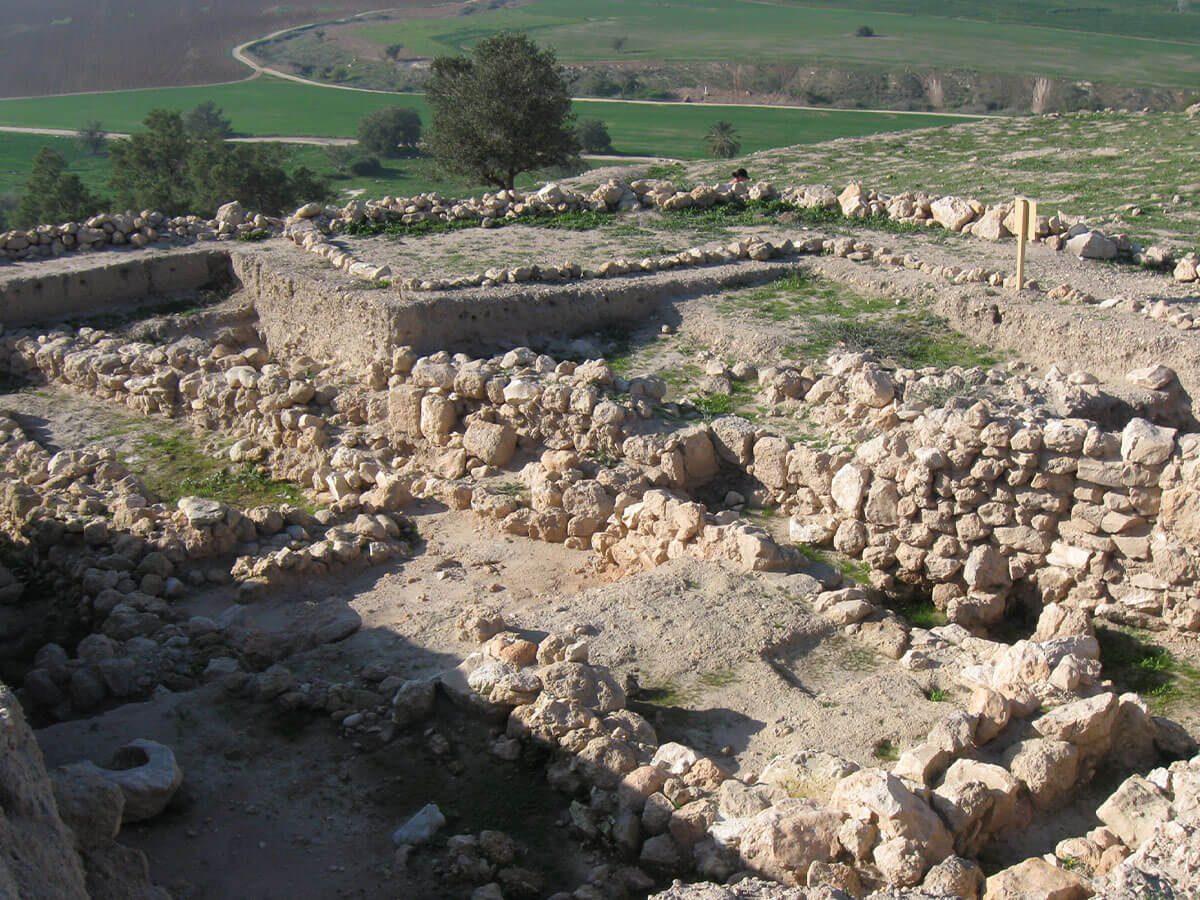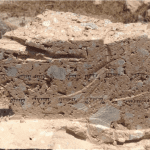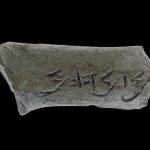
A breakthrough method is helping archaeologists confirm the conquest of Gath as described in 2 Kings 12. Researchers at 4 universities- Tel Aviv University, The Hebrew University of Jerusalem, Bar-Ilan University, and Ariel University- developed a new method which measures the earth’s magnetic field as it was “locked in” to burnt bricks discovered at the ancient site of the city of Gath, now the modern-day site of Tell-es Safi. Gath was the capitol city of the Philistines, enemies of the people of Israel, with one of its most famous citizens, the giant Goliath, being vanquished by King David as described in 1 Samuel 17. The events of 2 Kings 12 come long after the days of David, during the reign of his descendant King Joash. Verse 17 says, “About this time Hazael king of Aram went up and attacked Gath and captured it.”
Burnt bricks had been discovered at the site of Gath where it was captured by King Hazael, but until this method was developed, archaeologists were unable to confirm whether they were burnt by a great fire, such as during a conquest, or simply pre-fired bricks. According to researcher and leader of the study, Dr. Yoav Vaknin of the Sonia & Marco Nadler Institute of Archaeology, Entin Faculty of Humanities, at Tel Aviv University, and the Palaeomagnetic Laboratory at The Hebrew University, the new method allowed researchers to gradually erase the magnetic field locked inside the mud bricks through a process called thermal demagnetization. “We conduct the process gradually. At first, we heat the sample to a temperature of 100°C, which releases the signals of only a small percentage of the magnetic mineral. We then cool it down and measure the remaining magnetic signal. We then repeat the procedure at temperatures of 150°C, 200°C, and so on, proceeding in small steps, up to 700°C. In this way the brick’s magnetic field is gradually erased,” said Dr. Vaknin of the technique. “The temperature at which the signal of each mineral is ‘unlocked’ is approximately the same as the temperature at which it was initially ‘locked’, and ultimately, the temperature at which the magnetic field is fully erased was reached during the original fire.” The researchers first tested the method through controlled conditions in a laboratory.
The new technique enables researchers to identify burning temperatures conclusively as low as 200° C, whereas prior methods could only do 500° C or more. This method then allowed researchers to determine if the bricks found at Gath had been pre-fired as some archaeologists suggest. According to researchers, if the bricks had been pre-fired and then laid down along the wall, they would expect to find the temperatures at random. “When a brick is fired in a kiln before construction, it records the direction of the earth’s magnetic field at that specific time and place. In Israel this means north and downward. But when builders take bricks from a kiln and build a wall, they lay them in random orientations, thus randomizing the recorded signals. On the other hand, when a wall is burned in-situ, as might happen when it is destroyed by an enemy, the magnetic fields of all bricks are locked in the same orientation,” said Dr. Vaknin. Researchers are hopeful the new technique will offer new insights into numerous other archaeological sites.


